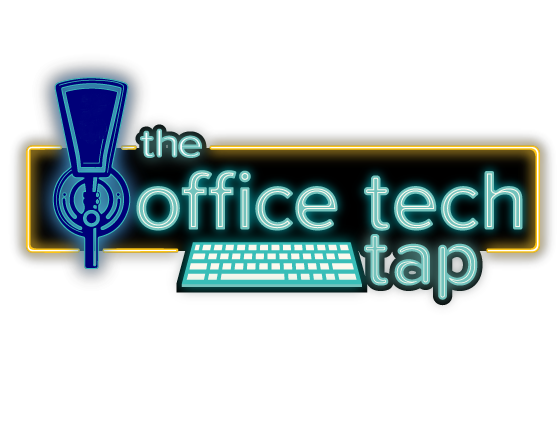Remote Work Is Here To Stay, Businesses Experiment With Hybrid Models

April 13, 2023
Industry
How Enrique Lores is Turning HP into a Hybrid Work Powerhouse
Because the future of work is more than a paperless meme

HP is transforming itself into a hybrid work powerhouse, according to CEO Enrique Lores. The pandemic has accelerated the trend towards hybrid work, where employees work both remotely and in the office. To support this new way of working, HP has introduced new products and services to cater to the changing needs of its customers. One of these is HP+, which offers an ink or toner subscription for convenient supplies replenishment and simplified print management for SMBs. The company has also developed new tools to help IT departments manage hybrid work environments, such as HP Proactive Insights, which monitors the health of printers and other devices remotely.
Lores believes that HP is well-positioned to help its customers navigate the new normal of work. “We see this as a huge opportunity to help our customers transform their businesses to the hybrid workplace,” he said. HP’s broad range of solutions, including hardware, software, and services, gives it an advantage in this market. Lores also noted that HP is investing in areas such as 5G, edge computing, and artificial intelligence to stay ahead of the curve.
HP’s transformation into a hybrid work powerhouse is part of a broader trend in the tech industry. Many companies are rethinking their products and services to cater to the changing needs of their customers in the post-pandemic world. As the article notes, “the pandemic has forced businesses to rethink how they work and how technology can help them adapt.” HP’s ability to adapt quickly to these changes and provide innovative solutions will be key to its success in the coming years.
HP’s transformation into a hybrid work powerhouse is an example of how companies are adapting to the changing work environment brought about by the pandemic. By introducing new products and services, such as HP+, and investing in emerging technologies, HP demonstrates its efforts to help customers navigate the new normal of work. As Lores puts it, “We see this as a huge opportunity to help our customers transform their businesses to the hybrid workplace.”
– Greg Walters, Head Writer
Work Trends
The Next Frontier in Customer Service: Chatbots That Can Read Emotions
How are you feeling? Your chatbot could soon know.

Chatbots are becoming an increasingly popular way for companies to provide customer service, but many are still unable to understand and respond to customers’ emotions. However, advancements in natural language processing and machine learning are making it possible for chatbots to read emotions and respond appropriately.
Emotion-sensing chatbots can detect the tone and sentiment of customer messages, allowing them to respond appropriately and improve customer satisfaction. These chatbots can also provide valuable insights into consumer behavior, enabling companies to identify common pain points and areas for improvement.
One example of an emotion-sensing chatbot is KIA’s chatbot, which uses machine learning to understand and respond to customer inquiries. If a customer sends a message with a negative tone or sentiment, the chatbot can recognize this and provide a solution or offer assistance. This can improve the customer experience and help the company retain customers.
Despite the potential benefits of emotion-sensing chatbots, there are concerns about the ethical implications of analyzing customers’ emotions. Some experts worry about how the data collected by these chatbots will be used and whether customers are comfortable with their emotions being analyzed.
To address these concerns, chatbot providers must be transparent about how they collect and use data. Customers must also be given the option to opt out of having their emotions analyzed if they choose to do so.
Another important consideration is the accuracy of emotion-sensing chatbots. These chatbots must be able to accurately detect emotions in order to provide useful insights and improve customer service. While some emotion-sensing chatbots are still in the early stages of development, others are already being used successfully by companies.
As one expert notes, “There’s definitely a place for these chatbots…it’s just a matter of making sure that the consumer is aware of what’s happening and that they’re okay with it.” Ultimately, emotion-sensing chatbots have the potential to revolutionize customer service by providing a more personalized and effective experience for customers.
Emotion-sensing chatbots represent the next frontier in customer service. As companies seek to improve customer satisfaction and gain valuable insights into consumer behavior, these chatbots will become increasingly important. However, it is important for chatbot providers to address concerns about the ethical implications of analyzing customers’ emotions and ensure that customers are aware of how their data is being used. With these considerations in mind, emotion-sensing chatbots can provide a valuable service and help companies better meet the needs of their customers.
– Greg Walters, Head Writer
Work
The Biggest Office Usage Trends And What Is And Isn’t Working
The office is back and so are the arguments over how to use it.

The Covid-19 pandemic forced many companies to transition to remote work, but as pandemic-related concerns ease, businesses are looking to bring employees back to the office. However, the return to in-person work is not without its challenges. In her Forbes article “The Biggest Office Usage Trends And What Is And Isn’t Working,” Rachel Montañez explores some of the trends emerging as companies navigate the post-pandemic landscape.
One of the biggest shifts has been the recognition that remote work is here to stay. Many employees have come to appreciate the flexibility and work-life balance that working from home offers. At the same time, companies are recognizing the value of in-person collaboration for creativity, innovation, and building a sense of community among employees. The solution for many companies has been to experiment with hybrid models that allow employees to work from home some days and come into the office for team meetings and other events.
Technology is also playing an increasingly important role in shaping the future of the office. Smart building systems, for example, can track occupancy levels and adjust lighting and temperature accordingly, improving energy efficiency and creating a more comfortable environment for employees. Virtual reality meeting rooms offer a more immersive experience for remote workers, making it feel like they are in the same room as their colleagues.
The widespread adoption of new technology also raises concerns about equal access and creating a sense of community among employees who work in different locations. Companies must ensure that everyone has the technology they need to work effectively, regardless of whether they are in the office or at home. Employers are also finding creative ways to build a sense of community among remote workers, such as virtual coffee breaks or online social events.
There is no one-size-fits-all solution for office usage. Companies must experiment and find what works best for their unique needs and culture. As Montañez notes, “Companies need to be willing to iterate, experiment, and adjust their approach based on what works best for their organization.” The key to success will be finding a balance between remote work and in-person collaboration that keeps employees engaged and productive.
– Greg Walters, Head Writer
Internet Relay Chat – News to Go
- Kyocera to assume Copystar brand as part of ambitious long-term marketing strategy
- Pro Take: AI Boom Will Test Readiness of IBM, and Its Customers
- Gen Z, Millennials Are Now As Sick and Tired of Their Jobs As Boomers
- Tim Cook on Shaping the Future of Apple



